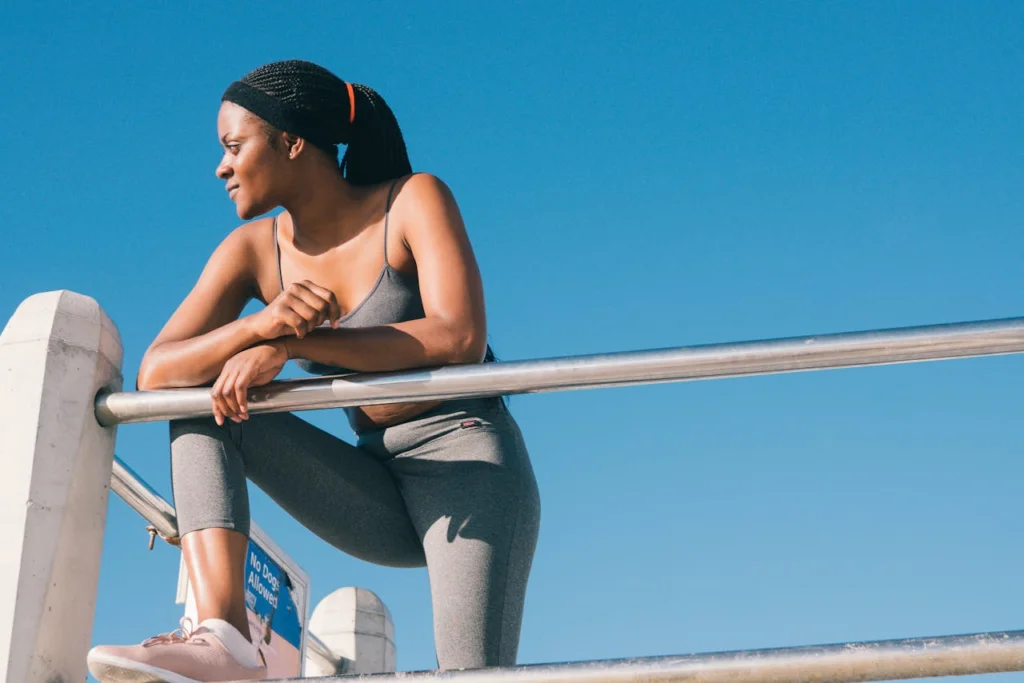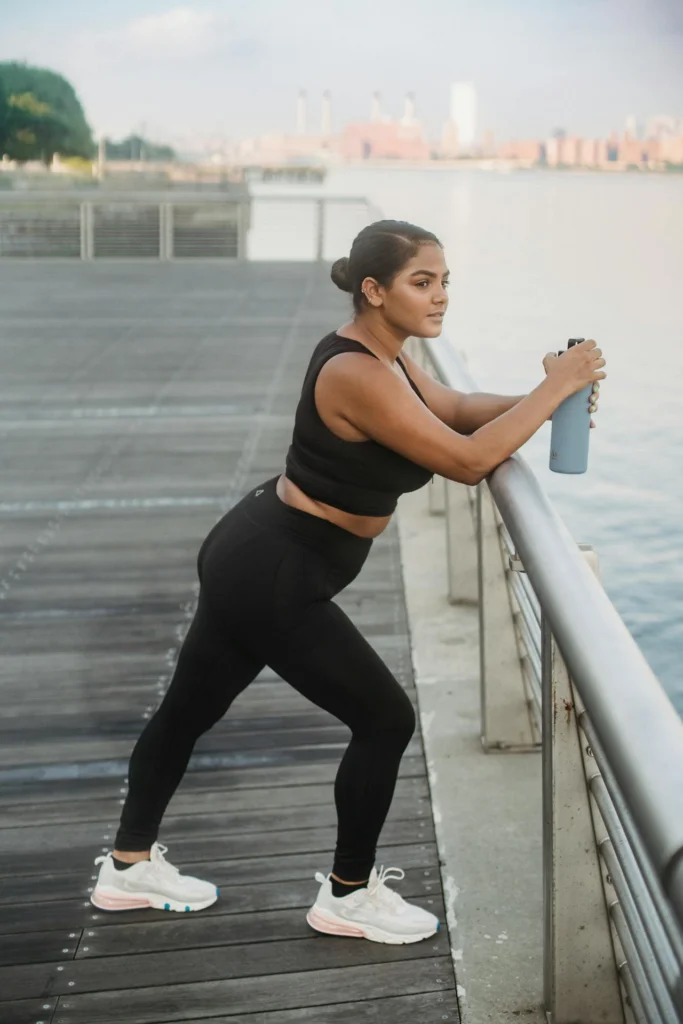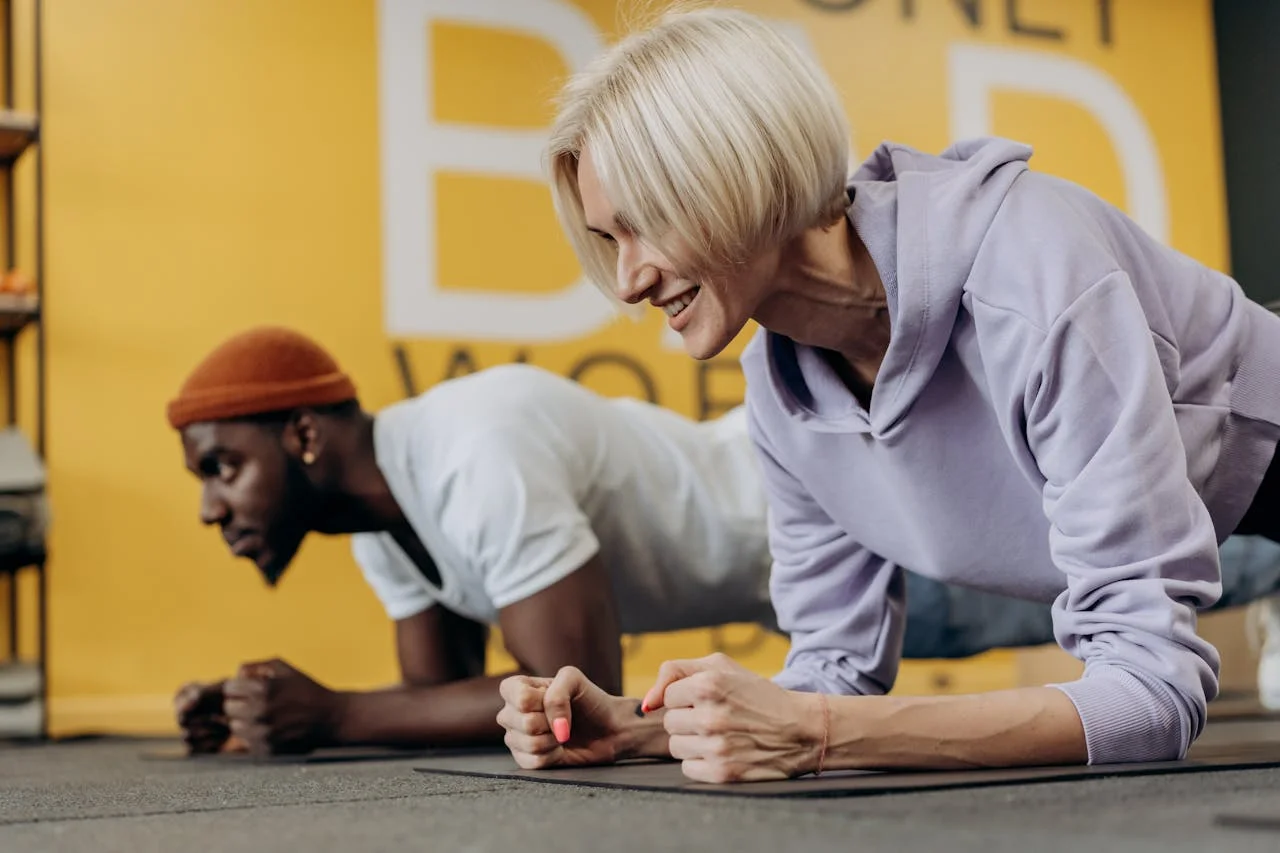
Have you ever wondered if you’re walking enough? Maybe you’ve heard about that magical “10,000 steps” number floating around, but you’re not sure if it’s right for you. Here’s the thing – your perfect daily steps goal isn’t one-size-fits-all, and that’s perfectly okay!
Let’s figure out what works best for your unique lifestyle, fitness level, and goals. You’ve got this!
Why Your Steps Goal Should Be Personal
First, let’s take the pressure off. That famous 10,000 steps target? It actually came from a 1960s Japanese marketing campaign for a pedometer, not scientific research. While it’s not a bad goal, it might not be your goal.
Your ideal daily steps depend on several factors:
- Your current activity level
- Age and physical condition
- Health goals
- Available time
- Lifestyle and schedule
Finding Your Starting Point
Before we set any goals, let’s see where you are right now. Don’t worry – there’s no judgment here, just honest assessment.
Week 1 Challenge: Track your steps for one full week without changing your routine. Use your smartphone (most have built-in step counters), a fitness tracker, or even a simple pedometer. Write down your daily totals.
Average Daily Steps by Activity Level
| Activity Level | Daily Steps Range | What This Looks Like |
|---|---|---|
| Sedentary | 2,500-4,999 | Desk job, minimal walking |
| Lightly Active | 5,000-7,499 | Some walking, light exercise |
| Moderately Active | 7,500-9,999 | Regular walks, active lifestyle |
| Very Active | 10,000-12,499 | Daily exercise, lots of movement |
| Highly Active | 12,500+ | Athletic lifestyle, very active job |
Where do you fall? Remember, wherever you are is your perfect starting point.
Setting Your Realistic Goal

Now comes the fun part – creating a goal that excites rather than overwhelms you. Here’s how to do it:
The 10% Rule (Your New Best Friend)
Take your current weekly average and increase it by just 10%. That’s it! This approach is sustainable and builds confidence.
Example:
- Current average: 6,000 steps
- Your new goal: 6,600 steps (6,000 × 1.10)
Step Goals by Health Objective
| Health Goal | Recommended Daily Steps | Timeline |
|---|---|---|
| Maintain current health | Current average + 500 | Immediate |
| Gradual weight loss | 8,000-10,000 | 2-3 months to build up |
| Significant weight loss | 10,000-12,000 | 3-6 months to build up |
| Cardiovascular fitness | 8,000-12,000 | 2-4 months to build up |
| General wellness | 7,000-9,000 | 1-2 months to build up |
Age-Friendly Step Recommendations
Your age isn’t a limitation – it’s just another factor to consider. Here’s what research suggests:
| Age Group | Recommended Daily Steps | Focus |
|---|---|---|
| 18-39 years | 8,000-12,000 | Building habits, variety |
| 40-59 years | 7,000-10,000 | Consistency, joint health |
| 60+ years | 6,000-8,000 | Mobility, balance, enjoyment |
Remember: These are starting points, not limits. You can absolutely exceed these if you feel good doing so!
Your Personal Daily Steps Calculator
🚶♀️ Your Personal Daily Steps Calculator 🚶♂️
Let’s find the perfect step goal that works for YOU!
🎉 Your Personalized Step Goal
📈 Your 8-Week Build-Up Plan
Take it step by step (literally!) – this gradual approach helps your body adapt and makes the habit stick.
💪 Quick Ways to Add More Steps
Remember: The best step goal is the one you can stick with! Start where you are, be kind to yourself, and celebrate every single step forward. You’ve absolutely got this! 🌟
Making It Happen: Practical Steps

Week-by-Week Build-Up Plan
Week 1-2: Establish your baseline (no pressure!) Week 3-4: Add 500 steps to your daily average Week 5-6: Add another 500 steps Week 7-8: Add final 500 steps to reach your goal
This gradual approach helps your body adapt and makes the habit stick.
Easy Ways to Add Steps Throughout Your Day
You don’t need to carve out huge chunks of time. Here are simple ways to sneak in more movement:
At Work:
- Take the stairs instead of the elevator
- Walk to a colleague’s desk instead of emailing
- Park farther away or get off transit one stop early
- Take walking meetings when possible
At Home:
- Walk while talking on the phone
- Do household chores with extra pep
- Take a short walk after meals
- Walk around during TV commercial breaks
Fun Activities:
- Explore new neighborhoods
- Try geocaching or Pokémon GO
- Dance to your favorite songs
- Window shop at the mall
Tracking Made Simple
| Tracking Method | Pros | Best For |
|---|---|---|
| Smartphone apps | Free, always with you | Beginners, budget-conscious |
| Fitness trackers | Detailed data, motivation features | Data lovers, consistent trackers |
| Simple pedometer | Inexpensive, no distractions | Those who prefer simplicity |
| Notebook logging | No technology needed | Old-school approach fans |
Choose what feels right for you – the best tracker is the one you’ll actually use!
When Life Gets in the Way
Some days you won’t hit your goal, and that’s completely normal. Here’s how to handle it:
Bad Weather Days: Try indoor walking (malls, stairs, pacing while doing chores) Busy Days: Focus on incidental movement – every step counts Tired Days: Aim for 70% of your goal rather than zero Sick Days: Rest! Your body needs recovery time
Celebrating Your Success
Set up reward milestones that aren’t food-related:
- New playlist after your first week of hitting goals
- Comfortable walking shoes after a month
- A massage after three months
- New workout clothes after six months
Your Action Plan
Ready to get started? Here’s your simple three-step plan:
- Track for one week – Know your baseline
- Set your goal – Add 10% or choose from the tables above
- Start tomorrow – Not Monday, not next month, tomorrow
The Bottom Line
Your perfect daily steps goal is the one that challenges you just enough to grow while being realistic enough to stick with. It’s not about perfection – it’s about progress and finding joy in movement.
Start where you are, use what you have, do what you can. Every single step is moving you toward better health and a stronger you. You don’t need to be perfect; you just need to begin.
So, what’s your daily steps goal going to be? Whatever number you choose, remember that the most important step is always the next one. You’ve got this! 🌟





Pingback: 20 Home Gym Ideas That Make You Want to Work Out